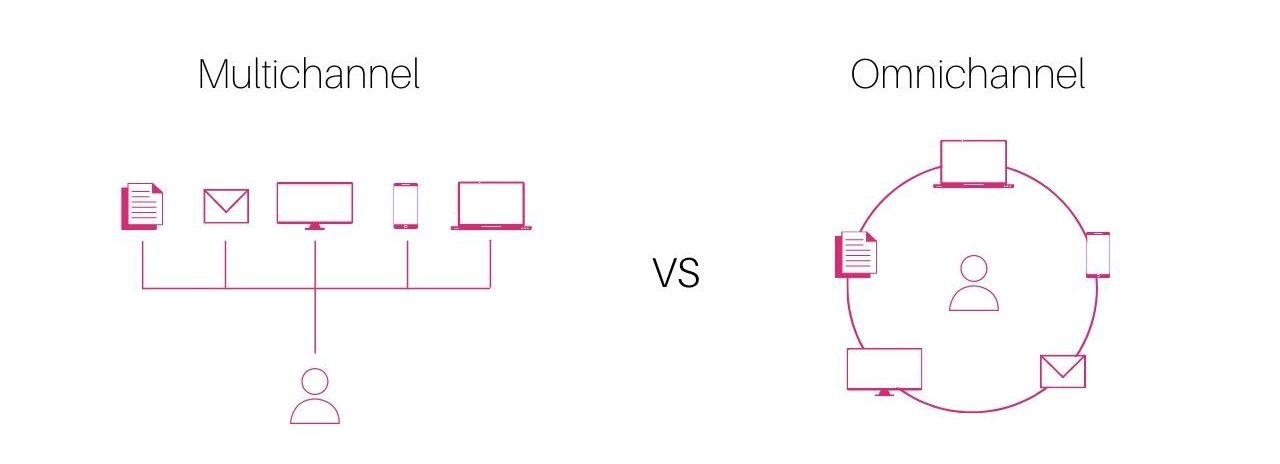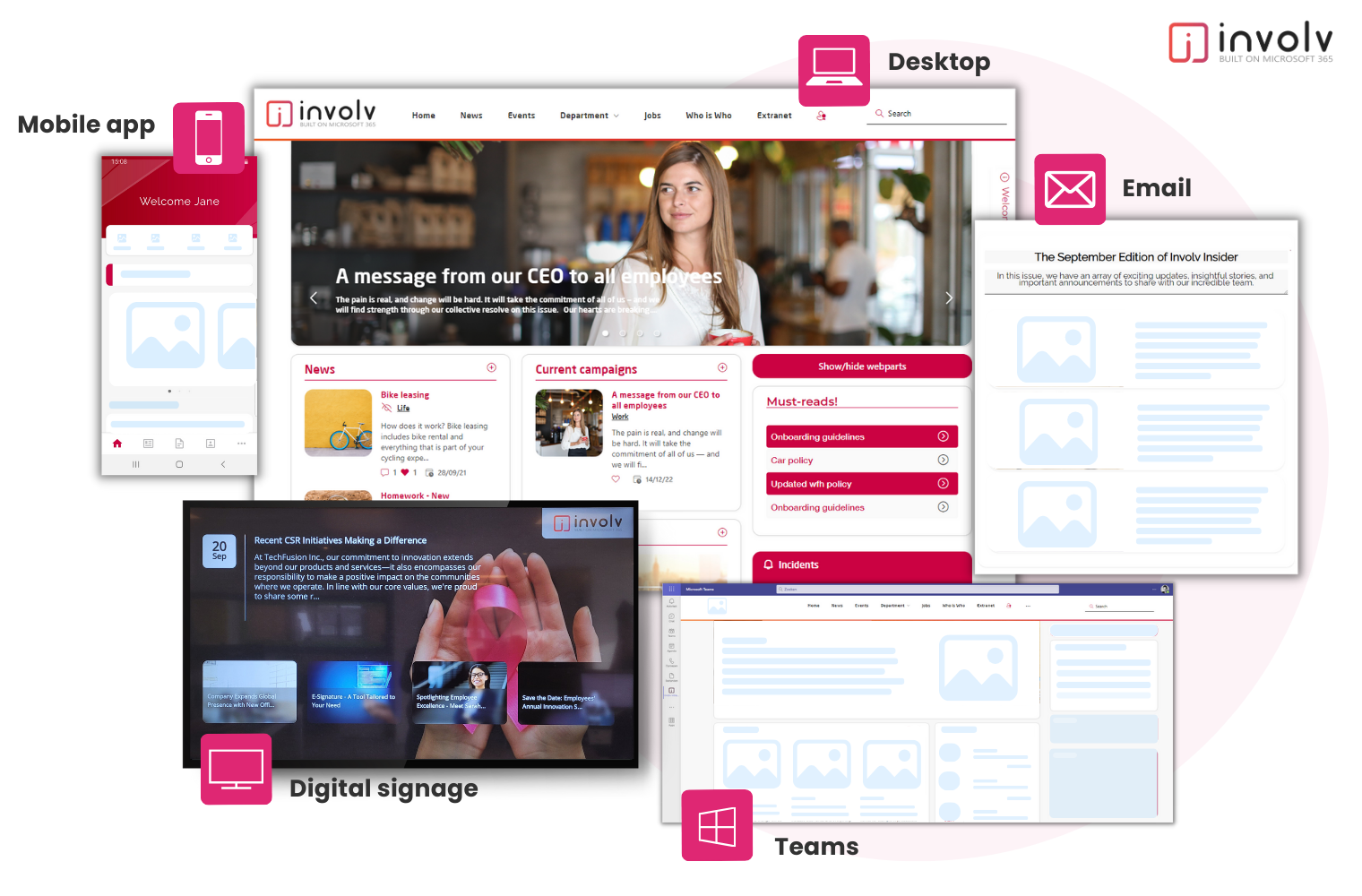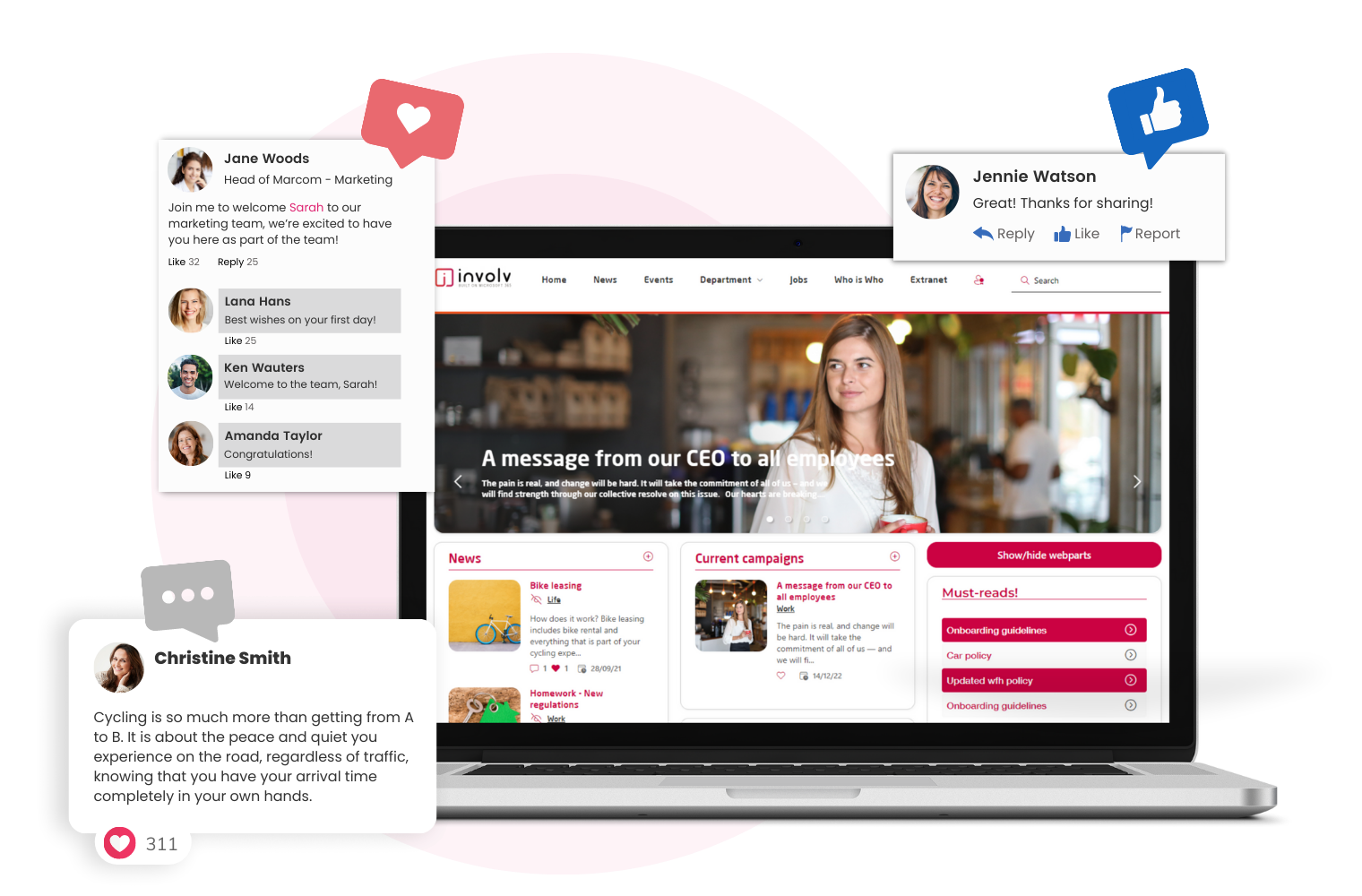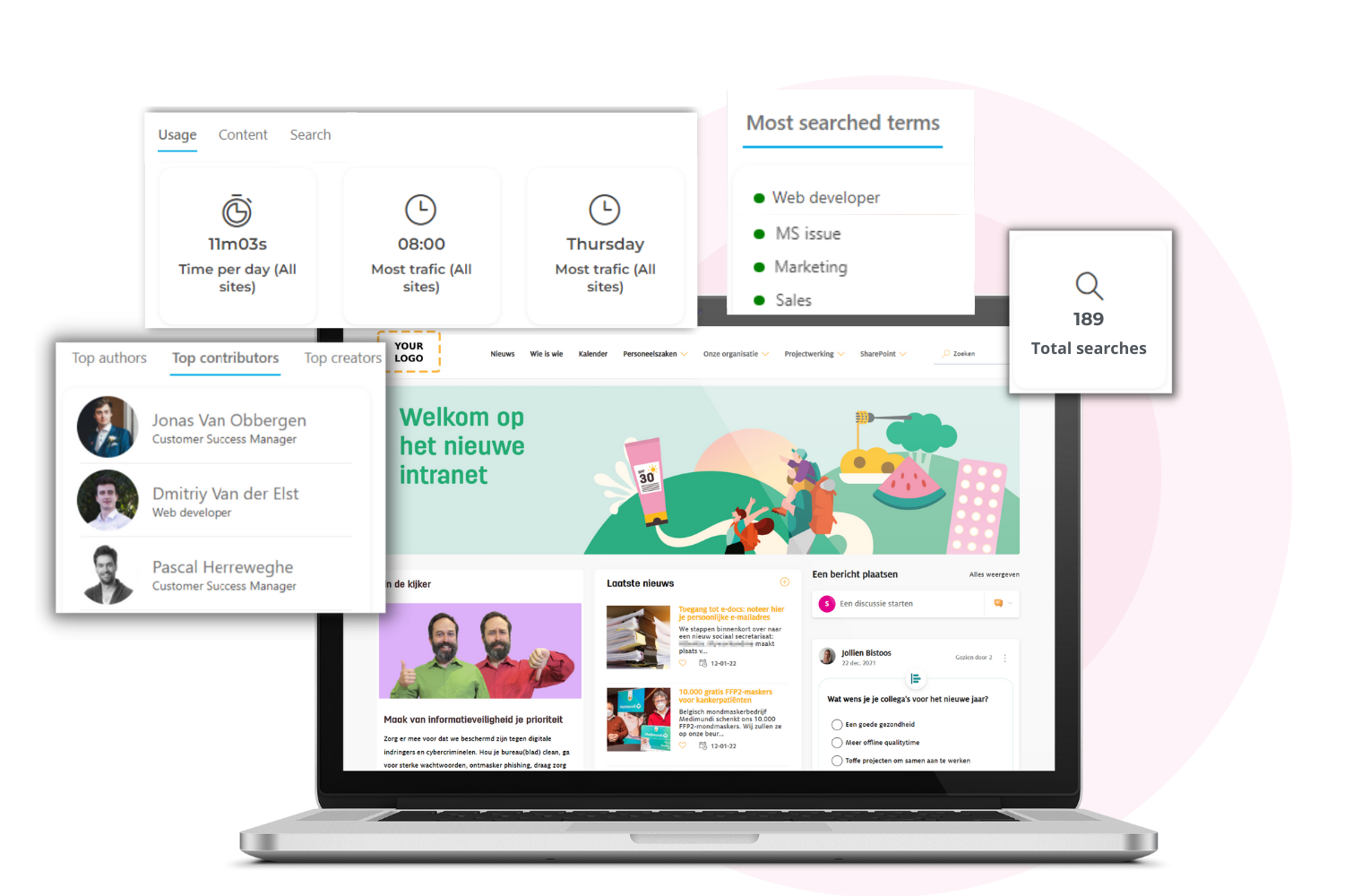The modern digital workplace offers a wide variety of internal communication tools and channels. From emails to social networks, intranets, and mobile apps, each platform offers its own unique advantages and is suitable for a specific audience and purpose within an organization.
However, it’s not simple to manage different channels and platforms while ensuring the message comes across personally to all your employees. That’s where an omnichannel strategy comes in.
In this blog post, we’ll dive into omnichannel communication and its key differences compared to the traditional multichannel approach.
In this blog post, we’ll dive into omnichannel communication and its key differences compared to the traditional multichannel approach. We”ll give you tips to start an effective omnichannel strategy for your internal communications, and how Involv intranet can support you with this strategy.
What is omnichannel communication?
It’s important that you know the difference between the omnichannel and the multichannel approach. Both mean using multiple channels, tools or platforms to reach and communicate with the entire workforce.
But the typical problem with a multichannel approach is that information gets pushed to employees through different channels without considering their needs, wants and personal preferences. Much of this content ends up being irrelevant, causing information overload. Plus, these channels often operate in silos, disconnected from each other.

In omnichannel communication, the employee is at the center. All data is created and managed centrally, usually in the company intranet, but is accessible from any channel thanks to seamless integration. The user therefore chooses which channels to use.
To further increase the relevance of this communication, content is also personalized; users always see relevant content tailored to their role and unique needs.
How to get started with omnichannel comms
Implementing an effective omnichannel strategy for your internal communications requires a systematic approach. Here are four key steps:
1. Audit your channels
Start by analyzing the communication channels you’re currently using: email, intranet, mobile apps, digital signage, collaboration platforms like Teams, and more.
Involv Intranet facilitates this by providing a true omnichannel experience with:
- Involv mobile app for IOS and Android for on-the-go access.
- Involv Cast, a digital signage solution for Microsoft 365 to reach deskless workers.
- Customized Involv newsletters and email notifications.

2. Get to know your employees
Personalize content to make it truly engaging and relevant. Get to know the diverse roles, locations, languages, interests, and communication preferences of your team. With Involv’s powerful personalization capabilities, you can perfectly tailor omnichannel experiences to meet the needs and requirements of your employees.
For example:
- Target intranet sites and content by attributes like role, department, location
- Let employees customize their quick link menus and subscribe to preferred content topics
- Enable employees to set preferences for notification channels.
- Dynamically display the intranet in each user’s preferred language
By leveraging Involv’s robust personalization engine and tapping into workforce data, you ensure your omnichannel communications feel tailored and valuable to everyone.
The more you can use data to segment and precisely target your audiences across channels, the more effective your omnichannel communications will be.
3. Enable Social Capabilities
The omnichannel approach isn’t just about broadcasting messages—it fosters two-way interaction. You want a platform or intranet that genuinely engages your team, encouraging them to participate in discussions, provide feedback, exchange opinions, and share ideas.
Involv addresses these needs by offering many collaboration capabilities, including:
- Commenting, liking, and @mentioning on content
- Built-in poll app to survey employees
- Ideation tool for Idea sharing and upvoting
- Intranet blogging to share updates and thought
- Instant messaging within the intranet

4. Make data-driven decisions
If you can’t measure it, you can’t improve it. Therefore, keep a close eye on those metrics as they show how you’re performing and where you can make adjustments for continuous improvement.
With Involv’s advanced analytics center, you have a unified hub of important KPIs, including:
- Site and content metrics like page visits, top performing contents, top channels
- Search analytics to optimize findability
- Profile analytics to identify intranet influencers
- Heatmaps revealing how users navigate pages
- Reports on notifications, mandatory reads, comments, and more

Build an effective omnichannel internal comms strategy with Involv intranet
In today’s digital workplace, an omnichannel approach to internal communications is essential for driving engagement and reaching employees where they are. By following these four steps, you can implement a powerful omnichannel strategy that caters to all your employees
With the right omnichannel platform like Involv Intranet, you can connect all your channels – intranet, mobile, email, Teams, digital signage and more – into one seamless experience. Personalized, targeted messaging ensures high engagement, while social capabilities foster open dialogue. Powerful analytics provide the insights to continuously improve.
Ready to transform your internal communications with a best-in-class omnichannel solution? Schedule a demo with the Involv Intranet team to discover how we can help you implement an effective omnichannel strategy.


